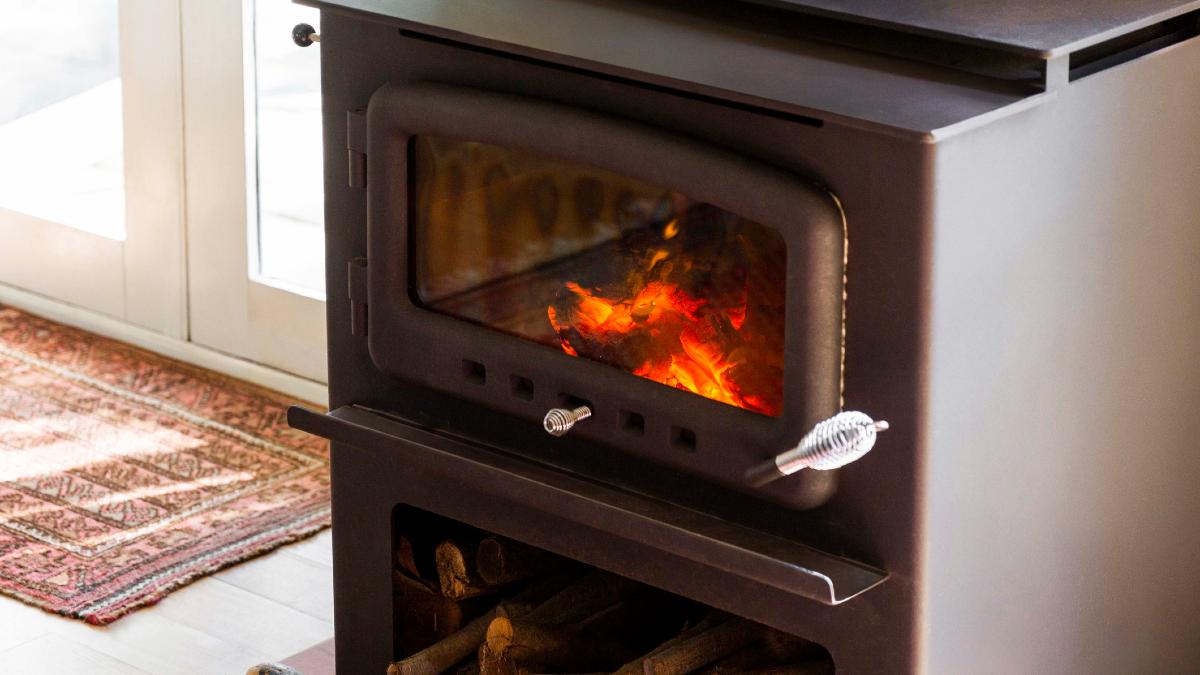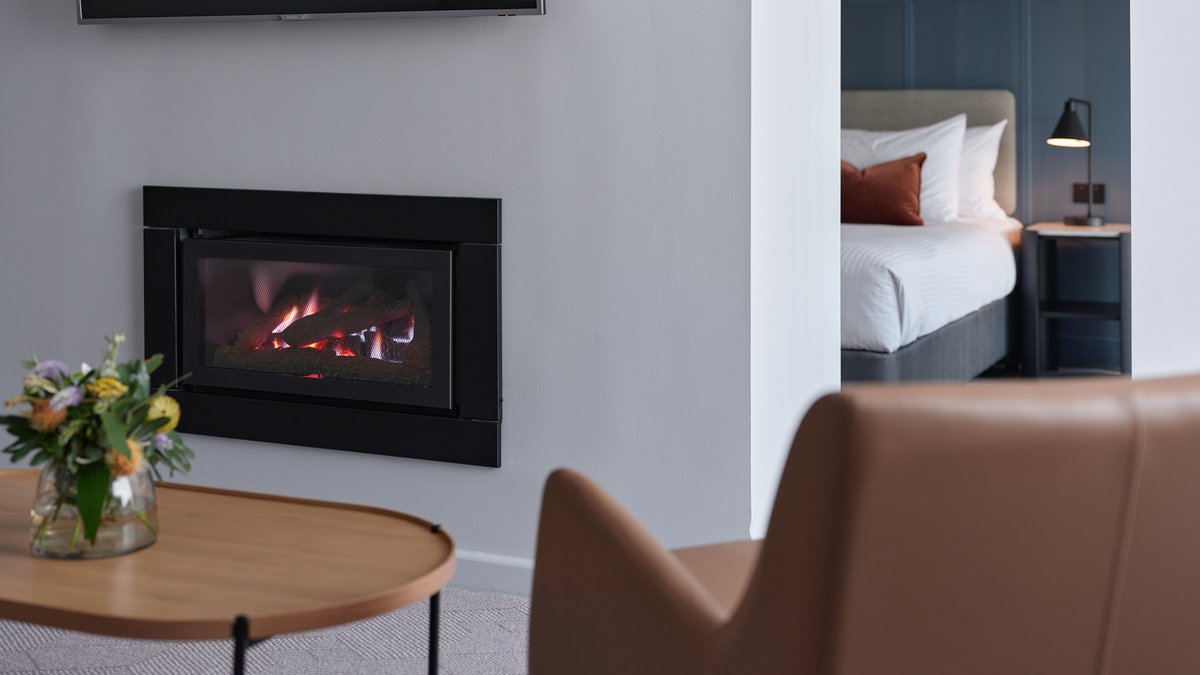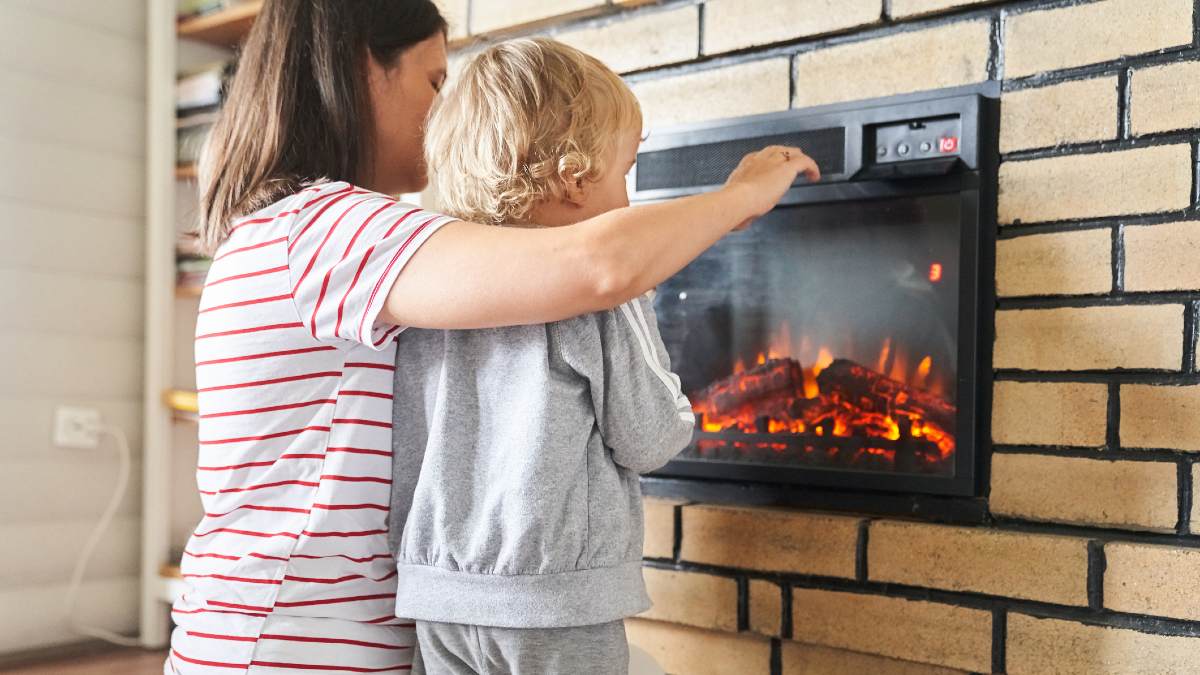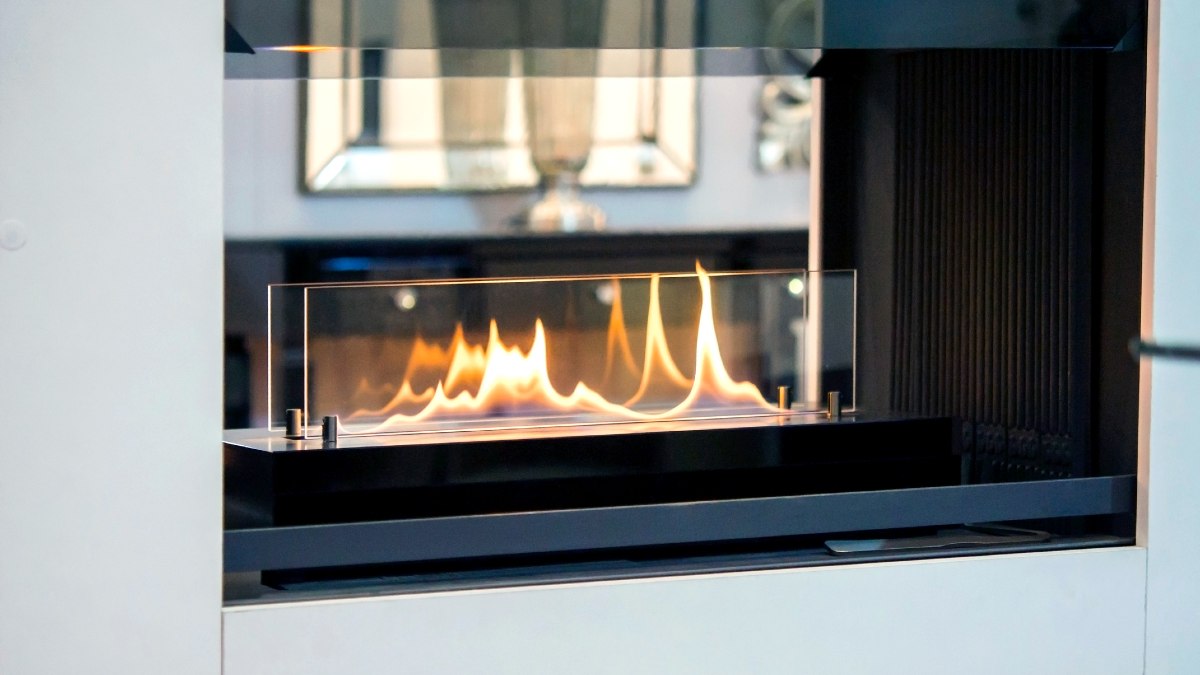Gas, ducted and split-system heaters all need to be serviced regularly to help improve efficiency, reduce running costs and protect your health.
Gas, electric or wood: the best type of fireplace for your home

Choosing between a gas, electric or wood burning indoor fireplace can be tricky. Compare the pros and cons of each type of fireplace so you can stay warm and comfortable in winter.
Indoor fireplaces have kept homes warm for centuries. Even with the advent of new, modern heating and cooling systems, fireplaces have remained popular in Australia, even with new builds and renovations, for their ability to add ambience as well as warmth.
There are several types of indoor fireplaces to choose from, each with their own benefits and drawbacks. If you're in the market for a new fireplace, it's important to consider your budget (both upfront and running costs), home set-up, family situation and any health considerations when selecting what type of fireplace is best for you.
Read more: How to clean and maintain your fireplace.
Wood, gas or electric: which indoor fireplace is best?
The best fireplace for your home is a very individual decision - the best fireplace for one household might not suit another.
In Australia, the primary types of indoor fireplaces available are wood burning, gas, electric and ethanol. Whatever fireplace you opt for, make sure it complies with the National Construction Code regulations and is installed by a qualified tradesperson.
Wood burning fireplaces
The oldest and most ‘natural’ form of the indoor fireplace, a wood-burning fireplace is exactly what it sounds like. Also known as a ‘solid fuel fireplace’, these fireplaces use logs of firewood or other combustibles (e.g. coal) as fuel.
Wood burning fireplaces must have a chimney and flue installed to direct the smoke and exhaust fumes out of your home.
Types of wood-burning indoor fireplaces:
Open-hearth fireplaces: usually made of brick and stone with smoke exiting via a chimney
Free-standing wood-burning stoves: this is not a 'stove' in the conventional use of the word, but rather, is a free-standing warmth option without the need for a fireplace. The heat can then radiate from all sides, which can either be vented through an existing fireplace or a newly built air vent.
Enclosed fireplaces: has a glass front that protects from sitting directly in front of the flame
Pros of wood burning fireplaces
- Provides strong radiant heat
- Doesn't require gas or electricity
- Have an ambience and aroma many find pleasant
Cons of wood burning fireplaces
- High and consistent maintenance
- Requires you to source and store the fuel
- Loses the most heat up the chimney of any fireplace
- Produces smoke that can irritate respiratory conditions
- Heat is unevenly distributed in the room
- Requires skill to ignite
- Hot to touch: present a fire hazard especially for homes with pets or children
Maintenance requirements: Maintain a one inch-thick layer of ash at the bottom of the fireplace, removing any excess ash once completely cool. Have your fireplace professionally cleaned and serviced every year.

There are several types of wood burning fireplaces, but all require some level of regular maintenance to remain safe and effective. Image: Getty.
Gas-burning fireplaces
Gas burning fireplaces, otherwise known as gas log fireplaces, provide powerful and consistent heating. Many consider them more convenient than wood burning fireplaces, as they can be directly connected to an existing home gas supply and don’t require you to manually start the fire.
Types of gas fireplaces
Vented: Vented (or flued) gas fireplaces have a flue and chimney (the ‘vent’) similar to wood burning fireplaces. They draw air for combustion either from inside your home or from outside your home and release any smoke and exhaust fumes outside.
Ventless: Ventless (or open flued) gas fireplaces burn at a higher temperature than vented models. This burns off the dangerous exhaust gases that are emitted outside the home in a vented fireplace.
There are strict regulations for such fireplaces in Victoria and it is recommended that you have a carbon monoxide alarm installed for these fireplaces (even if the model comes with an inbuilt alarm). Visit Energy Safe Victoria for more information.
Pros of gas fireplaces
- Strong and even heating capabilities
- Don’t lose as much heat up the chimney compared to wood burning fireplaces
- Easy to use – ignition via a switch or button
- Provide a similar ambience to a wood burning fireplace
Cons of gas fireplaces
- Higher upfront costs compared to electric and wood burning models
- Require your home to have a gas connection, or to have one installed
- Gas appliances are becoming increasingly expensive to run
- Hot to touch
Maintenance requirements: Energy Safe Victoria and the Victorian Building Authority advise that all gas heating appliances, including gas fireplaces, are serviced at least once every two years. This must be done by a qualified, plumber with a Type A gasfitter license.
If there is a gas fireplace (or other gas heater) in a rental property, a qualified gasfitter must provide a gas safety check at least once every two years.

Gas log fireplaces are good at providing strong, consistent heat with less maintenance than wood burners.
Electric fireplaces
Electric fireplaces can be one of the most economical fireplaces types, in terms of both upfront and running costs. This type of fireplace is powered by electricity – models can be both hardwired into your mains or simply plugged into an existing power outlet.
While they are highly efficient in terms of converting energy into heat, they are less effective as a standalone heating source and are commonly used for decorative purposes, or in conjunction with another heating appliance (like a split-system).
Pros of electric fireplaces
- Often cheaper to buy and install compared to other fireplace types
- Very energy efficient
- Safer for children and pets – no flame, no exhaust gases
- Low maintenance
- Can have ‘cool-touch’ exteriors as a safety feature
Cons of electric fireplaces
- Not as good at heating larger spaces
- Won’t work in a blackout (unless you have a back-up power source like solar batteries)
- Doesn’t produce real flames
Maintenance requirements: Electric fireplaces have minimal maintenance requirements that include periodically dusting the appliance as well as replacing any bulbs as necessary. Contact a qualified electrician if your electric fireplace is not working as expected.

An electric fireplace may be a better choice for families with children, as they do not produce actual flames. Image: Getty.
Ethanol fireplaces
Ethanol fireplaces are a modern type of fireplace that use bioethanol as the fuel source. This unique type of fuel allows you to have real flames without any smoke or soot, eliminating the need for a chimney and greatly reducing maintenance.
Pros of ethanol fireplaces
- Real flame
- No smoke or soot
- Versatile, can be installed in most homes
- Easy to light and extinguish
Cons of ethanol fireplaces
- Not good at heating large spaces, more for decorative purposes
- Requires you to source and resupply the fuel
- Slight odour on extinguishing, depending on brand of bioethanol fuel
Maintenance requirements: Wipe down the cold fireplace regularly to prevent dirt and dust build up. The burner should be removed where possible and cleaned in hot, soapy water when you notice a build-up of black residue or a strong smell.
What are fireplace inserts?
Fireplace inserts are an appliance that convert existing open fireplaces into a self-contained, fully-enclosed fireplace.
There are gas, wood burning and electric fireplace inserts available, and most can be fitted to any existing wood or masonry open fireplace.
As open fireplaces are typically very inefficient at heating a room, fireplace inserts allow homeowners to keep the façade of their existing fireplace while improving its efficiency. They also allow you to convert an existing wood open fireplace to gas or electricity, reducing the amount of maintenance that may be required.

Ethanol fireplaces aren't typically used as the main heat source, but they are stylish and produce no smoke or soot. Image: Getty.
Can indoor fireplaces be installed in apartments?
Some types of indoor fireplaces can be safely installed in apartments. These include electric and ethanol fireplaces, as they do not create smoke, exhaust gases or require a chimney and flue.
What are the rules for fireplaces in rental properties?
Rental properties in Victoria are required to have a fixed, energy-efficient heater in good working order located in the main living area. This definition explicitly includes fireplaces or wood burning stoves.
As of March 1, 2027, rental properties that have their heater irreparably break must have the heater replaced with an efficient electric reverse-cycle air conditioner.
What is the most energy efficient type of indoor fireplace in Australia? Which type of fireplace is the cheapest to run?
The energy efficiency of a fireplace includes both the cost of energy required to run the fireplace, combined with how well that fireplace converts that energy into heat.
As a general rule, electric fireplaces convert the most energy into heat, followed by gas, then wood burning fireplaces. However, electric fireplaces do not provide as much radiant heat as wood or gas burners, so are better suited to heating smaller spaces or as a decorative feature.
The energy efficiency of your fireplace will also be affected by the cost of gas or electricity from your supplier, as well as if you have solar panels or a solar battery installed.
While wood burning fireplaces don’t use any gas or electricity, you’ll still need to factor in the cost of firewood. Ideally, you should use only dried, seasoned wood created specifically for wood burners – using any old wood you find can burn ineffectively, result in excessive smoke and creosote, and even produce harmful fumes.
Do I need a building permit or council approval to install a fireplace in Australia?
Residents in Victoria typically do not need council approval or a building permit to install (or remove) a fireplace. Check with your local council for confirmation.
RACV Trades is a trading name of RACV's trade partner, Club Home Response Pty Ltd (Victorian registered domestic building practitioner number CDB-U 100178). All works are performed or arranged by Club Home Response Pty Ltd. trading as RACV Trades. Read the RACV Trades Terms and Conditions.


